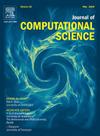Unraveling dynamics of bursting, transient, and tipping behavior in toxic plankton–fish system with fear and zooplankton refuge
IF 3.7
3区 计算机科学
Q2 COMPUTER SCIENCE, INTERDISCIPLINARY APPLICATIONS
引用次数: 0
Abstract
The increasing flow of environmental poisonous substances into aquatic systems elevates considerable concerns about their impact on natural aquatic environments. Among aquatic organisms, phytoplankton and zooplankton emerge as particularly vulnerable to these toxins. Additionally, the toxin-producing phytoplankton plays a pivotal role in regulating natural aquatic ecosystems. Our aim is to delve into the intricate interplay between phytoplankton, zooplankton, and fish populations involving the impact of toxins, predations fear, and refuge-seeking behavior of zooplankton. The dynamics of toxin release by phytoplankton exhibit a complexity characterized by various transitions, including saddle–node, transcritical, and Hopf bifurcations. Furthermore, a low refuge rate and a low minimum cost of fear result in bursting pattern behaviors and increase the frequency of these patterns. However, as these factors increase, the bursting patterns can no longer be sustained, leading the system to transition to a stable state. Additionally, the transient response is evident in the system under conditions of high refuge and high saturation levels of predation. The system swiftly transitions from unstable oscillations to stable dynamics within a very short transient time frame. Conversely, under conditions of very low refuge and low saturation levels of predation, tipping behavior is observed in the system, demonstrating sensitivity to initial populations. The presence of environmental toxins significantly impacts the species under discussion. All numerical simulations strongly validate the analytical findings. Furthermore, each result is accompanied by a biological interpretation, which is discussed in the conclusion section.
在有恐惧和浮游动物庇护的有毒浮游生物-鱼类系统中,揭示爆发、瞬态和引爆行为的动力学
环境有毒物质越来越多地流入水生系统,引起了人们对其对自然水生环境影响的相当大的关注。在水生生物中,浮游植物和浮游动物对这些毒素特别脆弱。此外,产毒浮游植物在调节自然水生生态系统中起着关键作用。我们的目标是深入研究浮游植物、浮游动物和鱼类种群之间复杂的相互作用,包括毒素、捕食恐惧和浮游动物寻求庇护行为的影响。浮游植物毒素释放动力学表现出复杂的过渡特征,包括鞍-结、跨临界和Hopf分岔。此外,较低的避难率和较低的最小恐惧成本会导致爆发模式行为,并增加这些模式的频率。然而,随着这些因素的增加,破裂模式不能再持续下去,导致系统向稳定状态过渡。此外,在高避难和高捕食饱和度条件下,系统的瞬态响应是明显的。系统在很短的瞬态时间内从不稳定的振荡迅速转变为稳定的动力学。相反,在非常低的避难所和低饱和捕食水平的条件下,系统中观察到倾斜行为,表明对初始种群的敏感性。环境毒素的存在严重影响了所讨论的物种。所有数值模拟都有力地验证了分析结果。此外,每个结果都附有生物学解释,这将在结论部分进行讨论。
本文章由计算机程序翻译,如有差异,请以英文原文为准。
求助全文
约1分钟内获得全文
求助全文
来源期刊

Journal of Computational Science
COMPUTER SCIENCE, INTERDISCIPLINARY APPLICATIONS-COMPUTER SCIENCE, THEORY & METHODS
CiteScore
5.50
自引率
3.00%
发文量
227
审稿时长
41 days
期刊介绍:
Computational Science is a rapidly growing multi- and interdisciplinary field that uses advanced computing and data analysis to understand and solve complex problems. It has reached a level of predictive capability that now firmly complements the traditional pillars of experimentation and theory.
The recent advances in experimental techniques such as detectors, on-line sensor networks and high-resolution imaging techniques, have opened up new windows into physical and biological processes at many levels of detail. The resulting data explosion allows for detailed data driven modeling and simulation.
This new discipline in science combines computational thinking, modern computational methods, devices and collateral technologies to address problems far beyond the scope of traditional numerical methods.
Computational science typically unifies three distinct elements:
• Modeling, Algorithms and Simulations (e.g. numerical and non-numerical, discrete and continuous);
• Software developed to solve science (e.g., biological, physical, and social), engineering, medicine, and humanities problems;
• Computer and information science that develops and optimizes the advanced system hardware, software, networking, and data management components (e.g. problem solving environments).
 求助内容:
求助内容: 应助结果提醒方式:
应助结果提醒方式:


